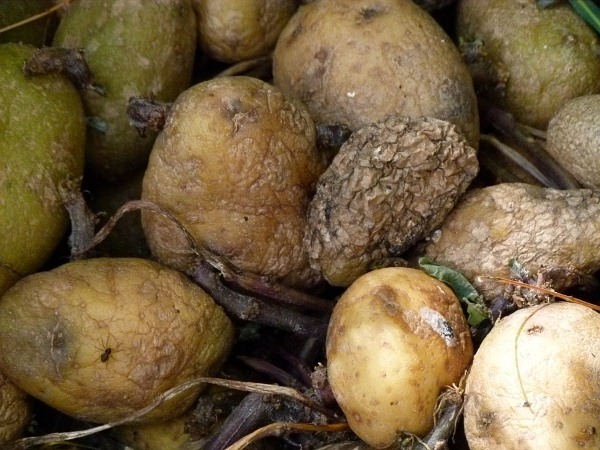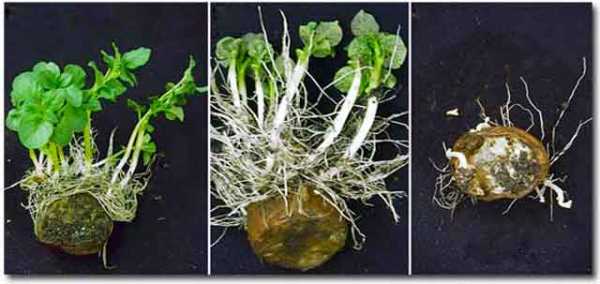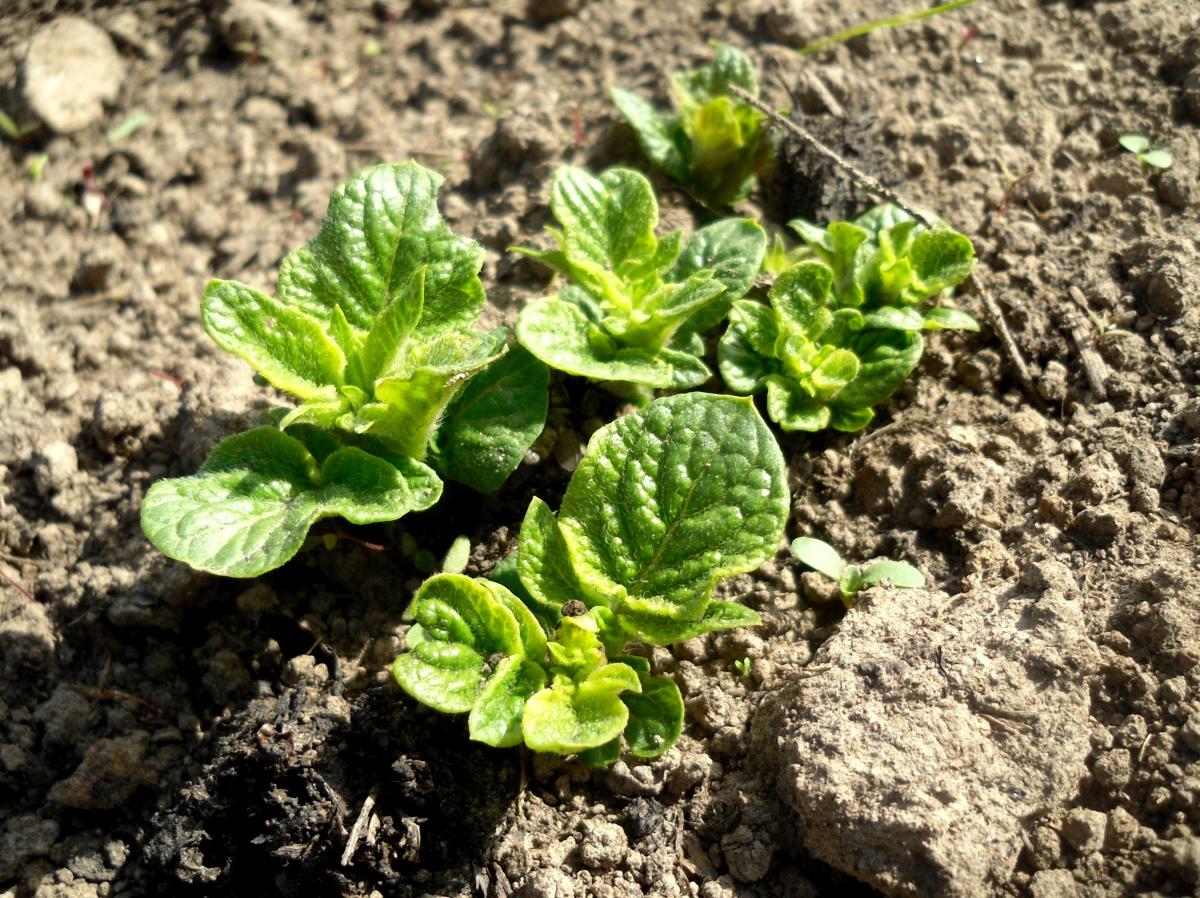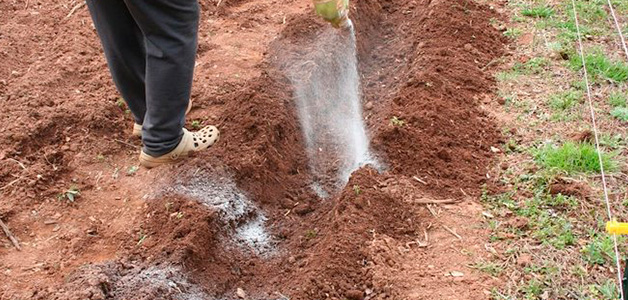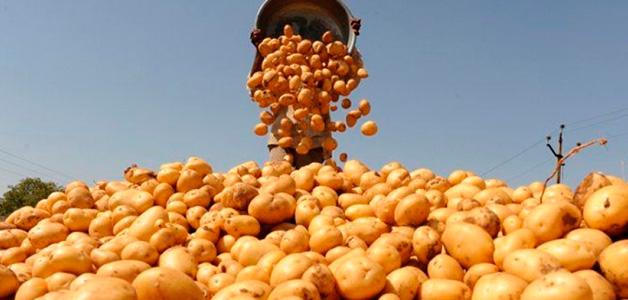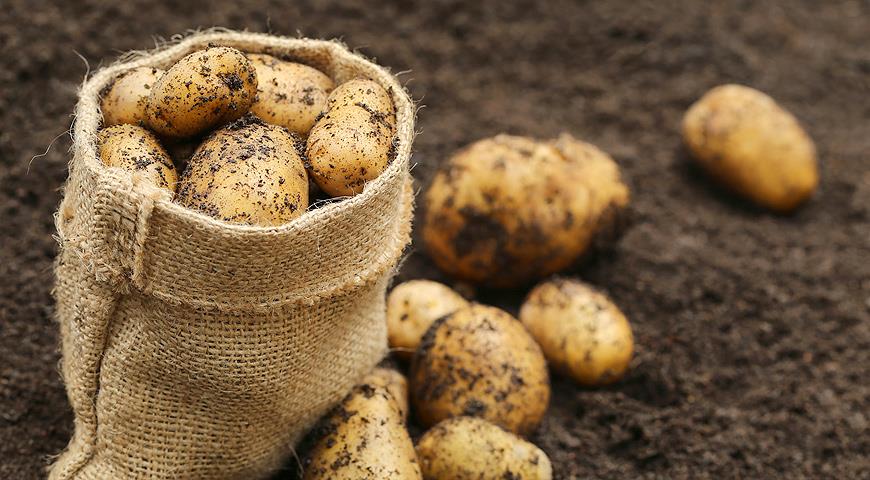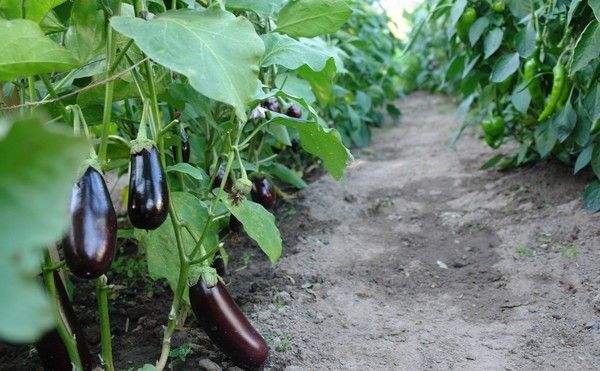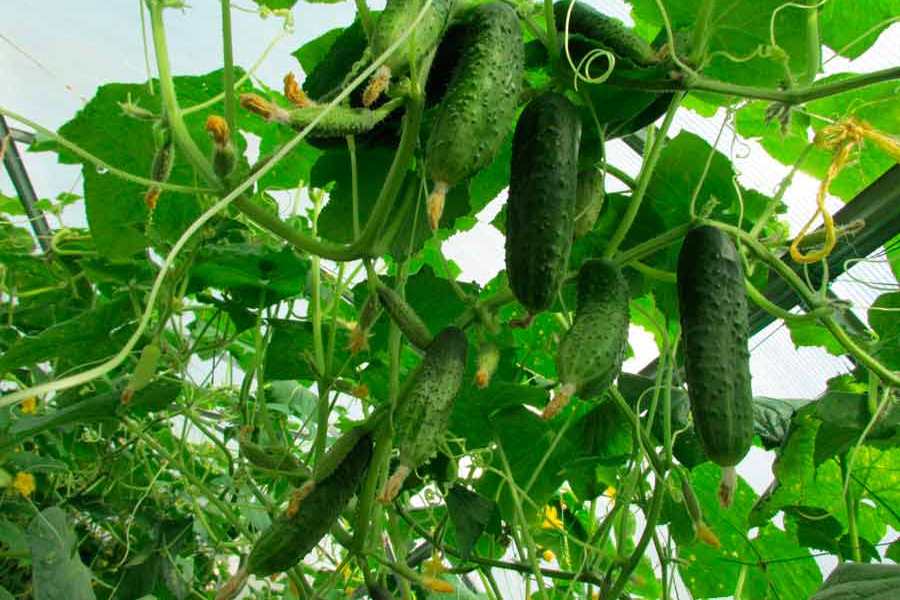Content:
Unstable winter weather does not always allow potatoes to be preserved, sometimes they can freeze.
The reasons for this may be the following:
- Failure to comply with storage rules and temperature conditions. This is the main and most common explanation for why potatoes freeze;
- The air humidity in the vegetable store is set from 85 to 93%;
- Potatoes need ventilation during storage. It is she who regulates humidity, temperature and air exchange.
Not all cellars are arranged correctly and allow you to save the harvested crop without loss. Planting tubers require temperatures from +3 to +6 degrees and darkness. Such conditions will not allow them to rot or freeze, but not everyone succeeds in creating them. It is especially difficult for villagers living in private houses and using the old, still grandfather's cellar. Building a room with ventilation and controlled temperature is a costly business and not everyone can afford it. You need not only money, but also knowledge of the construction of special utility rooms.
It happens to freeze potatoes in the fall. The first autumn frost suddenly hit, and the potatoes were not harvested. This does not always mean that the potatoes are frozen. The soil temperature is always higher than in air. The soil cools more slowly.
Potatoes will freeze out only if they are in the ground with sub-zero temperatures for more than 4 hours.
When there is a threat of frost, unharvested potatoes are covered with straw or mulch from any available material. This will prevent him from freezing.
Do not think that the harvest is lost. They dug up potatoes and believe: perhaps not all tubers are frozen. In addition, the potatoes remaining in the ground will attract many pests to the garden. It is better to dig it up and remove it from the site. This will protect against invasion by pests and disease vectors.
How to save frozen potatoes
You can also freeze vegetables during storage. There are times when the temperature is too low in a poorly closed cellar or basement. If, after winter storage, frozen potatoes were found in spring, not everyone knows what to do. Some immediately throw vegetables away, waving their hands at them. But the seed may still be salvageable. To do this, proceed as follows: the top layer is removed from the container with potatoes, most often, only the top vegetables have time to freeze. The tubers are sorted, washed and dried. If the potatoes are very frozen, they will become slippery and soft when warm. This means there will be no sense, and the situation cannot be corrected. They just throw it away.
By the tubers, what else can be reanimated, they determine how much they are frozen. Long-term presence of seed potatoes in a too cold room with a temperature of 0-3 degrees makes the starch in its composition turn into sugar. Frozen tubers are transferred to heat, and after a few days, the stopped process is reversed, and the sugar turns into starch again. This means that the vegetables have not lost their quality.
Frozen tubers for planting
Summer residents often ask if it is possible to plant frozen potatoes, and how to do it, are there any differences in the method of planting and caring for healthy and frozen tubers. Seed potatoes are brought into a warm room and monitored. When sprouts appear, the tubers are sprayed with a weak solution of potassium permanganate or just warm water.When the sprouts are swollen, the seeds can be planted.
Important! If the seed potatoes have already sprouted during storage, and then came under a cold temperature, the sprouts could also suffer
Harvest from frozen potatoes
Freezing potatoes also happens in the basement during storage, but this is not always a reason for frustration. Gardeners with extensive experience have learned how to get a good harvest even from such seed material and are ready to share it with other summer residents.
One of these methods: if the farm has a greenhouse, at the beginning of April, the potatoes are laid out in it. Very soon, the tubers will turn into small green bushes.
In May, they are carefully transplanted to a permanent place, and when they grow up to 15 cm, they are covered with earth. After another 2 weeks, the potato plantings are fed with complex fertilizers and hilled again. These activities will allow you to get a harvest no worse than from ordinary tubers.
If there is no greenhouse, after waiting for warm weather, frozen potatoes in boxes are put outside for the day. Instead of weak and pale eyes, good green shoots appear on them in bushes. Planting and care are the same as after the greenhouse. Can frozen potatoes be planted like regular tubers? In principle, you can plant them directly in the ground, if there is good fertile soil in the garden. But pre-sowing preparation and healthier seeds reduce the risk of a bad harvest and that the seed will not sprout.
Caring for planting frozen potatoes
Frozen potatoes are sick seed material, and they require careful attention to themselves, they must be grown with strict adherence to agrotechnical measures.
Loosening the soil
A week after planting, when the potatoes have not yet sprouted, the soil must be loosened, and best of all with a rake. This tool allows you to penetrate to a shallow depth. It will not harm the seedlings, but will increase the access of oxygen to the depths and at the same time destroy small seedlings of weeds that take moisture and micronutrients from the soil.
If it rains, the loosening operation is repeated. It is imperative to destroy the earth crust - it does not allow air to penetrate inside, and moisture evaporates through the cracks much faster. Loosening is carried out carefully so as not to damage the sprouts and not pull the seed tuber out of the ground.
Hilling plantings
When cultivating potatoes in the middle lane, there is a threat of recurrent frosts, one has to defend against them. Frosts are especially dangerous early in the morning. To protect young potato seedlings, they are covered with earth, sprayed with water, or smoke-filled. If possible, cover with polyethylene or nonwoven fabric. After watering, hilling is carried out. It is more convenient to do this on wet soil. With a hoe or flat cutter, they scoop the earth to the bushes, forming a small mound. If there is a threat of frost, the seedlings are covered with earth. After 1-2 days, the sprout will come out again whole and unharmed.
After 2 weeks, the second hilling of the bushes is carried out. This work will help plants bloom and form tubers faster. The procedure protects against infection with late blight and other diseases, prevents pathogens from moving into tubers from infected tops.
It is important to know! Potatoes grow and develop at a temperature of 18-22 degrees. With a slight increase in temperature, the tubers slow down growth, and at 30 degrees they do not grow at all. Harmful to tubers and temperatures below 10 degrees.
Watering a potato plantation
Potatoes need moist soil to grow. This is especially important during the period of emergence and growth of tubers. They are formed when the bush blooms. If the summer is dry, watering is needed to ensure the desired humidity. When watering, the type of soil is taken into account: on light soil, plantings are often watered, but little by little. On heavy soil, abundant but rare watering is needed. The water should be warm. It is impossible to allow stagnant water on the surface in the form of puddles.
Top dressing
Potatoes must be fed 3 times per season.The first time this is done when the green mass is growing. Top dressing is especially important if the bushes do not develop well and grow poorly. The need for fertilization is indicated by thin stems and pale leaves. For feeding 4 g of urea and 17 g of "Effekton" are diluted in 10 liters of water. Consumption for each bush is 500 ml of solution. Top dressing is done only on wet soil after rain or watering.
The second feeding is done when flower buds begin to form. For 10 liters of water, take 20 g of potassium sulfate and 100 g of wood ash. This solution will stimulate flowering.
The third feeding is needed to stimulate the formation of tubers. During the flowering of potatoes, take 15 g of superphosphate and Effekton in a bucket of water, stir and pour 500 ml of fertilizer under each bush.
A large-area potato plot makes it difficult to apply fertilizers in solution, and they use another technique, applying fertilizing with fertilizers in a dry form.
Scatter humus and 2 g of urea under the bushes. Before flowering, pour 8 grams under the potatoes. ash, 1 tsp. fertilizer "Seven-flower" and ½ tsp. potassium sulfate.
The culture itself will tell you what potatoes lack. With a lack of nitrogen, the stems become thin and the leaves become smaller.
If the surface of the foliage becomes bronze in color and the ends turn brown, there is not enough potassium.
Dull leaves and yellowing of the lower shoots indicate a lack of phosphorus.
With a lack of moisture, potatoes grow slowly, their foliage and roots do not develop.
Organic fertilizers are especially valuable for potatoes. They contain all the substances for a high yield. Not completely rotted manure works up to four years after its introduction into the soil, but in the decomposed humus there is 4 times more nitrogen than in fresh manure. Therefore, it is better to use humus for feeding.
If you work hard and follow all the rules for caring for potatoes, then even from frozen seeds you can grow a good harvest.
Important! Do not plant potatoes in the shade - the tubers will be small.
To the question: is it possible to plant frozen potatoes, potato growers give a positive answer. But the sad experience must be taken into account and the seeds must not be allowed to freeze next year.
